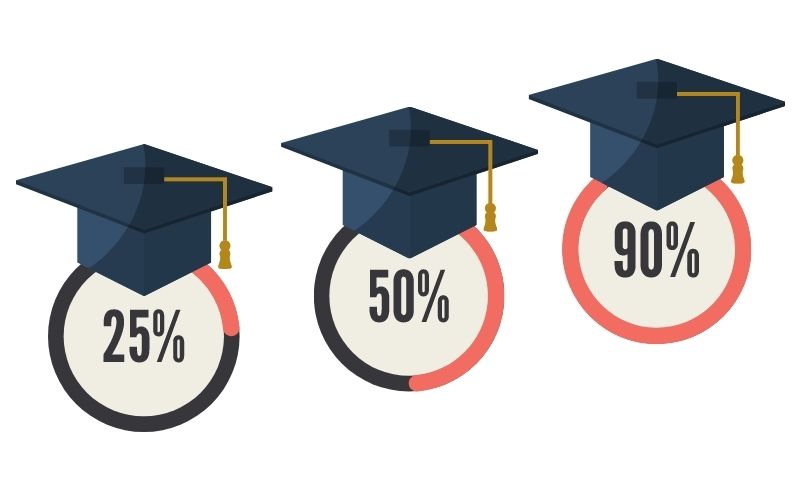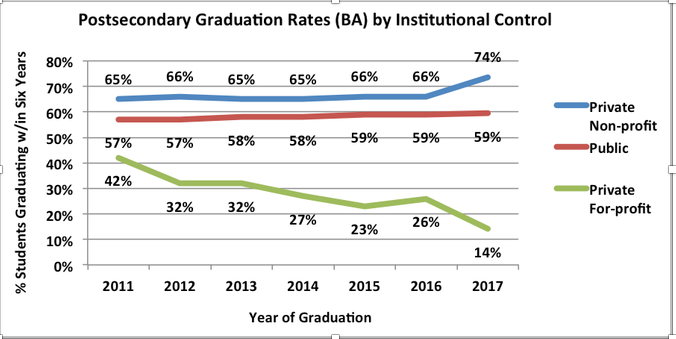College Graduation Rates: Boost Success with Tips
- Update Time : Thursday, June 6, 2024

College graduation rates indicate the percentage of students who complete their degree programs. These rates vary significantly across different institutions.
Understanding college graduation rates is crucial for prospective students, educators, and policymakers alike. It sheds light on the effectiveness of educational institutions and their ability to support student success. High graduation rates often signal a supportive learning environment and robust academic resources.
Conversely, lower rates may highlight areas needing improvement, such as student services or academic programs. This metric also influences a college’s reputation, affecting its attractiveness to potential students. Analyzing these rates helps identify trends and disparities in higher education, guiding efforts to enhance student outcomes and educational quality.
The Significance Of College Graduation Rates
College graduation rates hold significant weight in evaluating economic health. High rates often lead to a robust, skilled workforce, which can drive economic growth. Employers seek graduates for their advanced skills and knowledge, which, in turn, boosts productivity and innovation.
On an individual level, earning a degree can open doors to better job opportunities and higher wages. Graduates typically earn more than non-graduates over a lifetime. This can lead to improved quality of life and financial security. Also, they often experience lower unemployment rates compared to those without a degree.
| Education Level | Impact on Earnings | Impact on Employment |
|---|---|---|
| College Graduate | Higher lifetime earnings | Lower unemployment rates |
| Non-Graduate | Lower lifetime earnings | Higher unemployment rates |
Current Trends In Graduation Rates
National averages for college graduation rates show a significant variation. Different factors contribute to these differences. Economic background, institution type, and geographic location play pivotal roles.
Discipline-wise, graduation rates vary widely. STEM fields often see higher completion rates than the humanities. This trend reflects the market’s demand for science and technology professionals.
| Discipline | Graduation Rate (%) |
|---|---|
| Engineering | 69 |
| Humanities | 54 |
| Business | 65 |
| Education | 59 |
Barriers To College Completion
Many students face financial challenges during their college journey. Tuition fees and living costs can be overwhelming. Scholarships and part-time jobs sometimes help, but not always enough. Unexpected expenses often add to the stress, making it tough for some to stay in school.
Alongside financial issues, academic and social hurdles also exist. College demands high academic performance, which can be daunting. Social integration is vital for a positive college experience but can be difficult for many. Balancing coursework with social activities requires skillful time management.
- Budgeting problems
- High tuition fees
- Lack of scholarships
- Stressful coursework
- Time management struggles
- Difficulty in making friends

Credit: www.gettingatthecore.com
Strategic Study Habits For Success
Mastering time management techniques is essential for academic triumph. Splitting study sessions into short, focused intervals can boost retention. Prioritize tasks by deadline and complexity, using tools like planners and apps to keep track.
Effective learning approaches involve active engagement with the material. Summarizing chapters in your own words and teaching concepts to others can reinforce understanding. Group studies encourage diverse perspectives, fostering a deeper comprehension of subjects.
The Role Of Support Systems
Academic advisors play a crucial role in boosting college graduation rates. They provide tailored guidance, helping students navigate academic challenges. Students often benefit from personalized study plans and resources. These advisors are pivotal in connecting students to essential support services.
Equally vital are peer networks. These networks create a community of learners who share knowledge and experiences. They offer moral and academic support, which can significantly impact student success. Engaging in study groups and campus organizations fosters a sense of belonging. This encourages persistence towards graduation.

Credit: www.winginstitute.org
Utilizing Campus Resources
Maximizing college success often involves leveraging campus resources. Students should explore tutoring services offered by their institution. Many colleges provide free or low-cost tutoring in a variety of subjects. These services help students grasp challenging material and improve their grades.
Workshops are also available, covering study skills, time management, and exam preparation. Participating in these can provide strategies for academic efficiency. Attendance can lead to improved performance and a better understanding of course content.
Engagement with Career Services is crucial for post-graduation success. These departments assist in resume building, interview preparation, and job search strategies. They often host career fairs and networking events, connecting students with potential employers.
Securing internships is another key step. They offer real-world experience and can be a gateway to full-time employment. Institutions often have partnerships with companies specifically for student internships. Making use of these opportunities is highly beneficial.
Financial Aid And Scholarships
Understanding financial aid packages is crucial for college affordability. Scholarships and grants often form a significant part of these packages. Students need to read the details carefully. It’s important to know what is a loan and what is free money.
To increase college graduation rates, seeking out scholarships is essential. Many organizations offer scholarships based on various criteria. These include academic achievements, community service, or specific talents. Students should research and apply to as many as possible. Deadlines are key, so keep track of them.
| Scholarship Type | Criteria | Application Deadline |
|---|---|---|
| Academic Excellence | High GPA, Test Scores | Varies |
| Community Service | Volunteer Work | Varies |
| Arts and Sports | Portfolio, Athletic Achievements | Varies |
Credit: www.businessinsider.com
Maintaining Well-being And Balance
Maintaining a healthy balance in college is key. Stress management is crucial. Extracurricular activities play a big role.
Simple activities like joining a sports team or a music club can help. They make your mind fresh. You also make new friends. This is good for your well-being.
Setting aside time for hobbies is also important. It allows you to relax. And, it helps you manage your stress better. Remember, doing things you love is vital.
- Take short breaks during study sessions.
- Exercise regularly to keep your body fit.
- Eat healthy to fuel your brain.
- Get enough sleep every night.
These steps will help you stay balanced. And, they will improve your college experience.
Post-graduation Planning
After college graduation, many doors open. Career services help a lot.
They connect grads to job opportunities. Networking is key for finding good jobs.
Further education and training might be needed. It makes your skills better.
Some choose more classes to learn new things. It helps in career growth.
Alumni Success Stories
Alumni success stories shine a bright light on the value of hard work. Many graduates credit their college experiences for shaping their futures. They talk about challenges faced and obstacles overcome. These stories are not just about earning degrees. They are about personal growth and reaching goals.
One common theme is the importance of mentors. Many alumni stress how guidance from professors and peers was crucial. Another key point is networking. Building relationships helped them in their careers.
Advice from these alumni includes staying focused and embracing challenges. They also suggest seeking help when needed. Their journeys teach us about perseverance and the importance of setting clear goals.
Frequently Asked Questions
What Factors Affect College Graduation Rates?
Several factors influence college graduation rates, including academic preparation, financial support, institutional resources, student engagement, and external commitments. Balancing these elements is key to improving graduation outcomes.
How Do College Graduation Rates Vary By State?
Graduation rates vary widely by state, with factors like funding, academic standards, and economic conditions playing significant roles. States with more resources often see higher completion rates.
Can Financial Aid Impact Graduation Rates?
Yes, financial aid can significantly impact graduation rates. It reduces the financial burden on students, allowing them to focus more on their studies and less on part-time jobs, thus potentially increasing their chances of graduating.
What Is The Average College Graduation Rate In The Us?
The average college graduation rate in the US hovers around 60%. However, this figure varies depending on the type of institution, with private colleges generally reporting higher rates than public ones.
Conclusion
Understanding college graduation rates is crucial for prospective students and educators alike. It highlights the importance of choosing the right institution and support systems for academic success. By focusing on schools with higher completion rates, students can increase their chances of achieving their educational goals.
Ultimately, a thorough examination of these rates empowers students to make informed decisions about their future.


















Leave a Reply